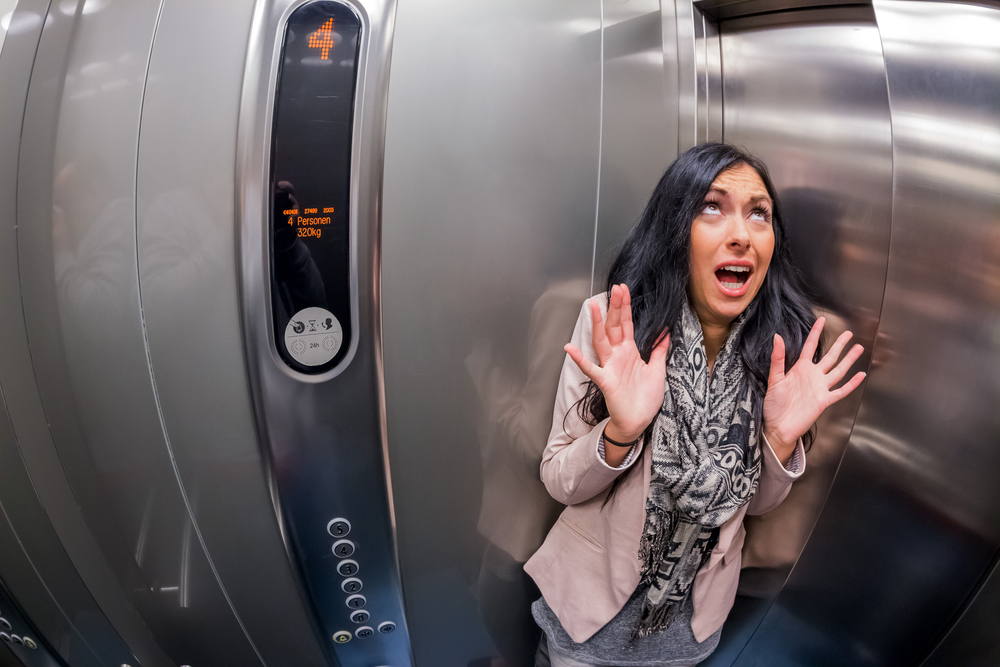Ever had that moment in an elevator where you swear it tilted or lurched? It’s unsettling, right? Well, those little moments can sometimes turn into serious accidents. From sudden stops that throw you off balance to terrifying free falls, elevator mishaps can happen.
Elevators are an essential part of modern infrastructure, ensuring convenience and accessibility for people in buildings of all sizes. However, when elevators malfunction or are poorly maintained, they can pose significant risks. From minor inconveniences to severe injuries, elevator accidents can have life-altering consequences.
At Abrams Justice Trial Attorneys, we’ve seen the damage these accidents can cause. Our Miami elevator accident lawyers are here to help if you’ve been injured. We’ll investigate what went wrong and fight for the compensation you deserve. Here are the top 15 causes of elevator accidents in Florida…
Top 1: Mechanical Failures
Mechanical failures are the most common cause of elevator accidents in Florida. These failures often result from worn-out components, such as cables, pulleys, or motors, that have not been replaced or maintained properly. When a key part of the elevator’s mechanical system breaks down, it can lead to sudden stops, misleveling, or even free falls.
Regular maintenance and timely repairs are essential to prevent mechanical issues from endangering passengers. Building owners and maintenance companies who neglect these responsibilities can be held liable for resulting injuries. Protect your rights after an elevator malfunction by working with dedicated elevator malfunction attorneys in Miami.
Top 2: Inadequate Maintenance
Routine maintenance is critical to ensuring the safety and functionality of elevators, but neglect in this area is a leading cause of accidents. Elevator systems require regular inspections to identify and address wear and tear, potential malfunctions, and safety hazards. When property owners or maintenance companies fail to perform these inspections, elevators may develop issues such as misleveling, faulty doors, or sudden stops.
Neglecting maintenance can also lead to long-term damage, making the elevator more susceptible to major malfunctions. Victims injured due to inadequate maintenance may face significant medical expenses and have the right to pursue legal action to hold negligent parties accountable.
Top 3: Electrical Malfunctions
Electrical malfunctions can cause a range of dangerous situations, from sudden stops to fires and electrocutions. These issues often arise from faulty wiring, outdated electrical systems, or improper installation.
Electrical problems can disrupt the elevator’s normal operation, leaving passengers stranded or causing unexpected movements. In severe cases, exposed wires or electrical sparks may ignite fires, posing a risk to everyone in the building.
Property managers and maintenance crews are responsible for ensuring that all electrical systems meet safety standards and are routinely inspected. Seeking help from a compassionate elevator injury lawyer can make all the difference in securing the justice you deserve.
Top 4: Human Error
Human error, whether by building staff, maintenance workers, or passengers, is another frequent cause of elevator accidents. For instance, a maintenance technician might inadvertently disable a safety feature during repairs, or a building employee might overload the elevator with heavy equipment.
Passengers themselves can contribute to accidents by ignoring posted weight limits or tampering with controls. Human error often exacerbates other underlying issues, such as mechanical or electrical failures. Ensuring proper training for staff and educating passengers about safe elevator use can significantly reduce the risk of accidents caused by human error.
If a defective elevator caused your injuries, contact a knowledgeable elevator lawyer to discuss your case.
Top 5: Overloading
Exceeding an elevator’s weight capacity is a common cause of accidents, particularly in busy commercial or residential buildings. Overloading places excessive strain on the elevator’s suspension cables and motors, increasing the risk of sudden stops or drops. Passengers in overloaded elevators may suffer injuries ranging from minor bruises to severe trauma if the system malfunctions.
Property owners and managers must enforce weight limits and ensure that elevators are equipped with functional alarms to alert users when the capacity is exceeded. Victims of overloading accidents may pursue claims against negligent parties for their injuries.
Top 6: Manufacturer Defects
Defective elevator components, such as faulty cables, sensors, or control systems, can lead to catastrophic accidents. Manufacturer defects often go unnoticed until an accident occurs, making them particularly dangerous. These defects may cause issues like door malfunctions, misleveling, or sudden accelerations.
Elevator manufacturers are responsible for ensuring that their products meet strict safety standards and are free from defects. When a defect is discovered, the manufacturer must issue recalls or repairs to prevent further incidents. Victims injured due to manufacturer defects can file product liability claims to seek compensation for their damages.
Top 7: Improper Inspections
Regular inspections are crucial to identifying potential issues with an elevator’s operation, but inadequate or skipped inspections are a significant cause of accidents. Licensed professionals are required to evaluate mechanical, electrical, and structural components to ensure compliance with safety standards.
If inspections are incomplete or performed negligently, hazardous conditions can go unnoticed, leading to accidents like sudden stops, door malfunctions, or misleveling. Property owners and inspection companies have a responsibility to adhere to strict guidelines and schedules for inspections.
Victims injured in accidents due to improper inspections may hold these parties accountable through legal claims. If you’ve been injured in an elevator accident in Miami, you have rights. Our experienced elevator accident lawyers are here to fight for your rights.
Top 8: Poor Installation
Improper installation of elevator systems is another significant cause of accidents. Elevators that are not installed according to manufacturer guidelines or building codes may develop operational issues, such as misalignment or instability. Poor installation can also compromise the effectiveness of safety features, increasing the likelihood of accidents.
Property owners and contractors are responsible for ensuring that elevators are installed correctly and inspected thoroughly before being put into operation. Victims of accidents caused by poor installation may hold the responsible parties accountable through legal action. Trust the dedicated team at Abrams Justice Trial Attorneys, your reliable elevator malfunction attorney in Miami, to handle your claim.
Top 9: Aging Equipment
Older elevators are more prone to malfunctions due to outdated technology and wear and tear. Aging equipment may lack modern safety features, such as advanced sensors or emergency braking systems, increasing the risk of accidents.
Property owners must invest in upgrades or replacements to keep older elevators in safe working condition. Neglecting to address aging equipment can lead to serious incidents, such as structural failures or electrical malfunctions.
Victims injured in accidents involving outdated elevators often require extensive medical care and may seek compensation for their injuries. Our Miami elevator accident lawyers are here to help you navigate the legal process and get the compensation you deserve.
Top 10: Environmental Factors
External factors, such as flooding, power outages, or extreme weather conditions, can also cause elevator accidents. For example, water damage from flooding may short-circuit electrical systems, while power outages can leave passengers stranded. High winds or seismic activity can disrupt the alignment of elevator components, leading to malfunctions.
Property owners must take proactive measures, such as installing backup power systems and waterproofing, to mitigate the risks posed by environmental factors. Victims affected by accidents caused by these factors may have grounds for legal claims if negligence played a role.
Top 11: Software Malfunctions
Modern elevators often rely on computerized control systems to manage operations, but software glitches or cyberattacks can disrupt their functionality. These malfunctions might cause erratic movements, such as sudden stops, rapid accelerations, or doors opening between floors.
In extreme cases, a cyberattack could disable safety features entirely, posing severe risks to passengers. Elevator manufacturers and building managers must invest in secure, updated software to prevent these incidents. Victims of accidents caused by software malfunctions may file claims to recover damages for their injuries and losses.
Top 12: Overheating Components
Elevator systems consist of various electrical and mechanical components that can overheat if not properly maintained. Overheating can cause parts like motors, brakes, or wiring to fail, leading to accidents such as sudden stops or even fires. High temperatures can also compromise the integrity of safety mechanisms, putting passengers at risk.
Building managers must ensure that ventilation systems are functional and that overheating issues are promptly addressed. Victims of accidents involving overheating components often require immediate medical care and may pursue legal claims for negligence.
Top 13: Miscommunication During Repairs
Accidents can occur when maintenance workers or building staff fail to communicate effectively during elevator repairs. For example, an elevator might be put back into operation before repairs are completed, exposing passengers to unsafe conditions.
Miscommunication can also result in neglected safety protocols, such as failing to display warning signs or secure access points during maintenance. Such errors often lead to preventable accidents that could have been avoided with better coordination.
Victims of accidents caused by repair miscommunication may seek compensation for their injuries and other damages. Let a skilled Miami elevator accident attorney fight for your fair compensation for medical bills, lost wages, and emotional trauma.
Top 14: Vandalism
Deliberate acts of vandalism can render elevators unsafe, leading to accidents. Vandals might damage control panels, disable safety sensors, or interfere with mechanical components, putting passengers at risk. These acts can compromise the elevator’s ability to operate safely and increase the likelihood of malfunctions.
Property managers are responsible for ensuring that elevators are secure and protected from tampering. Victims of elevator accidents caused by vandalism may seek compensation for injuries and hold the responsible parties accountable.
Top 15: Lack of Emergency Lighting
Elevators rely on emergency lighting to provide visibility during power outages or malfunctions, but failures in this system can exacerbate the danger. When emergency lighting is absent or inadequate, passengers may struggle to find exits, read instructions, or use communication devices. This lack of visibility increases the risk of panic and accidents, especially during prolonged entrapments.
If you’ve been injured in an elevator accident, it’s crucial to hold the responsible parties accountable. The dedicated Miami elevator accident attorneys at Abrams Justice Trial Attorneys are ready to stand by your side and fight for your rights. With our extensive experience in handling elevator injury cases, we’ll thoroughly investigate your claim and pursue the compensation you deserve. Don’t let negligence or defective systems go unchecked—schedule a consultation today and take the first step toward rebuilding your life.


